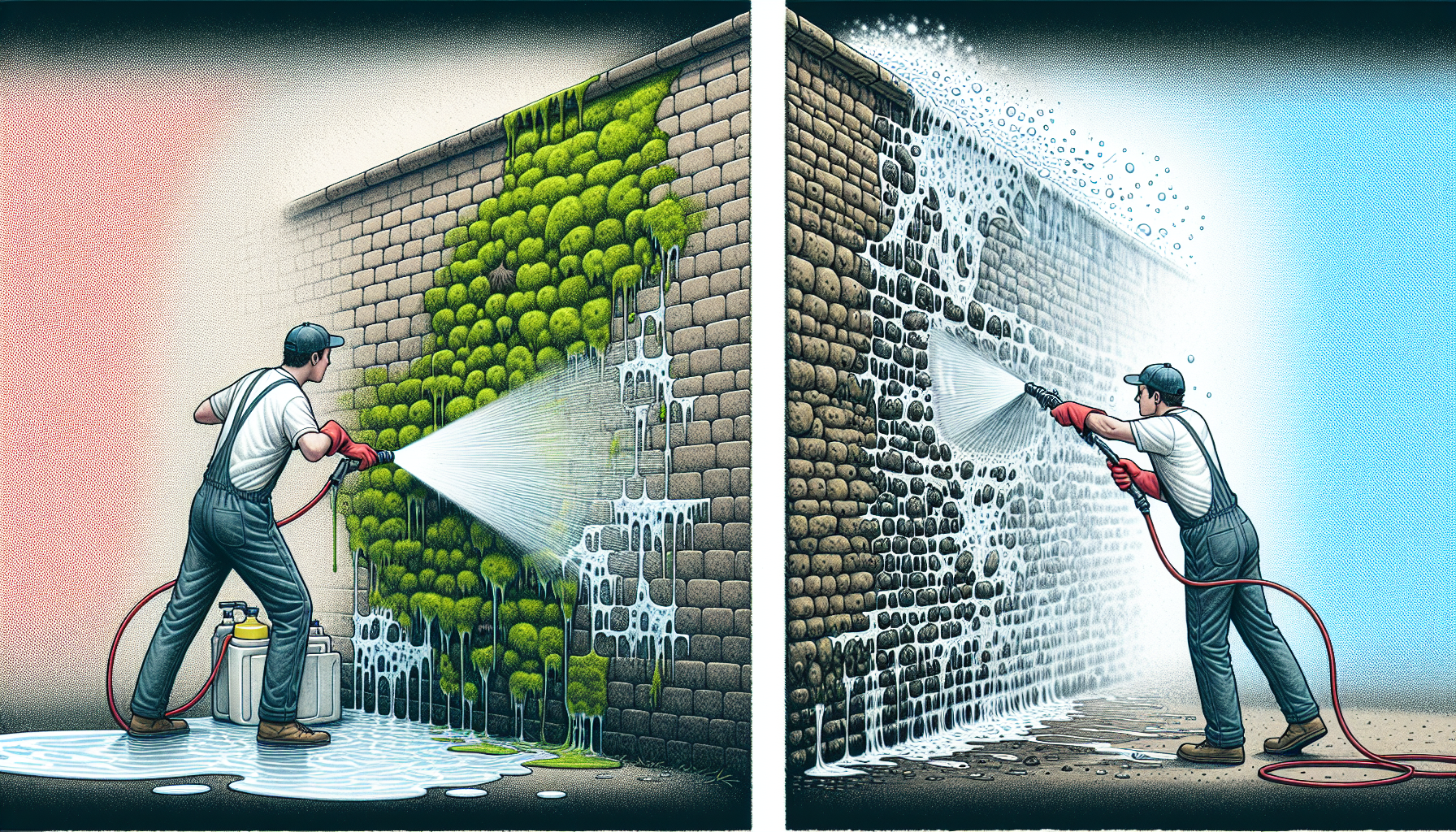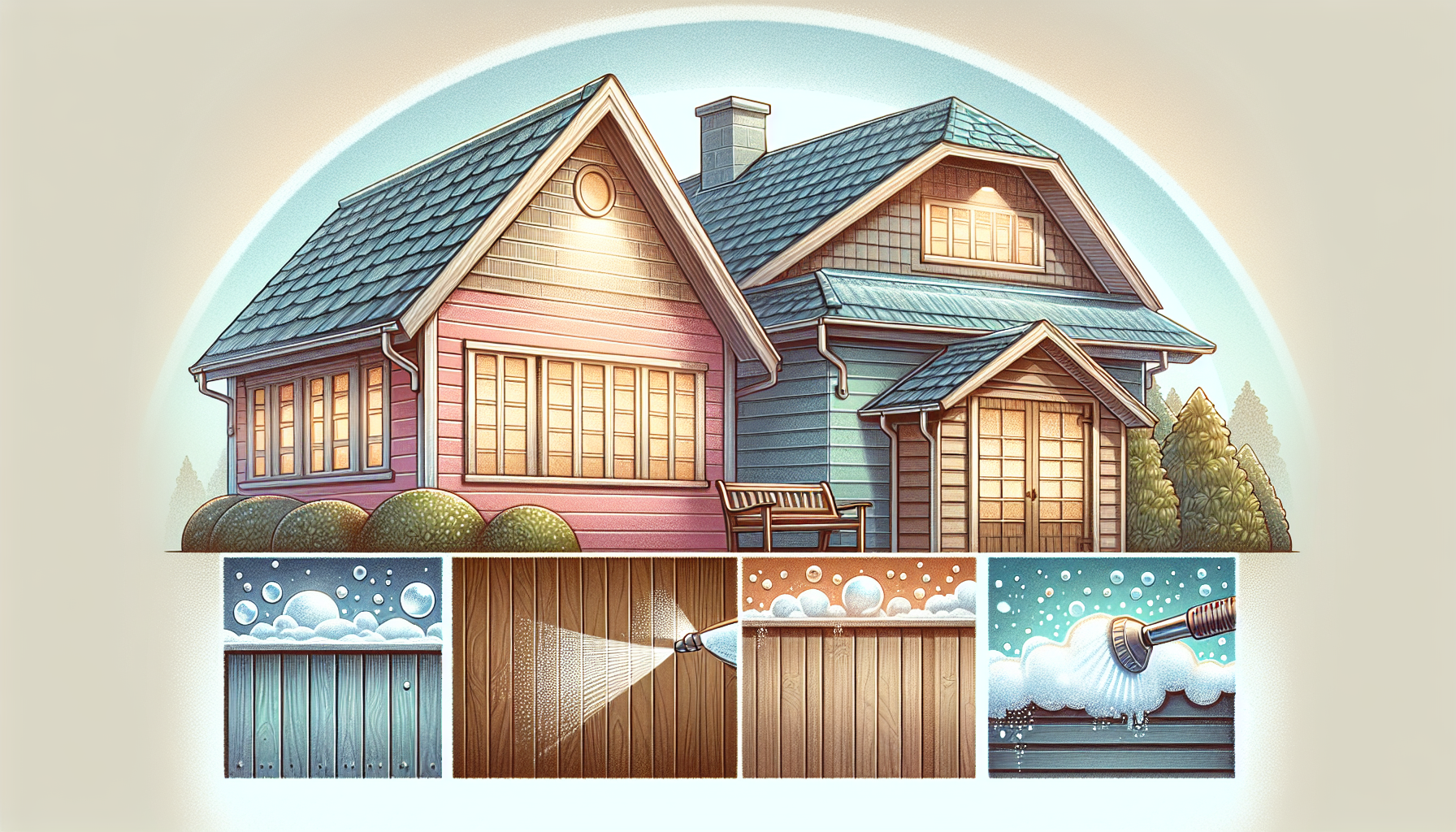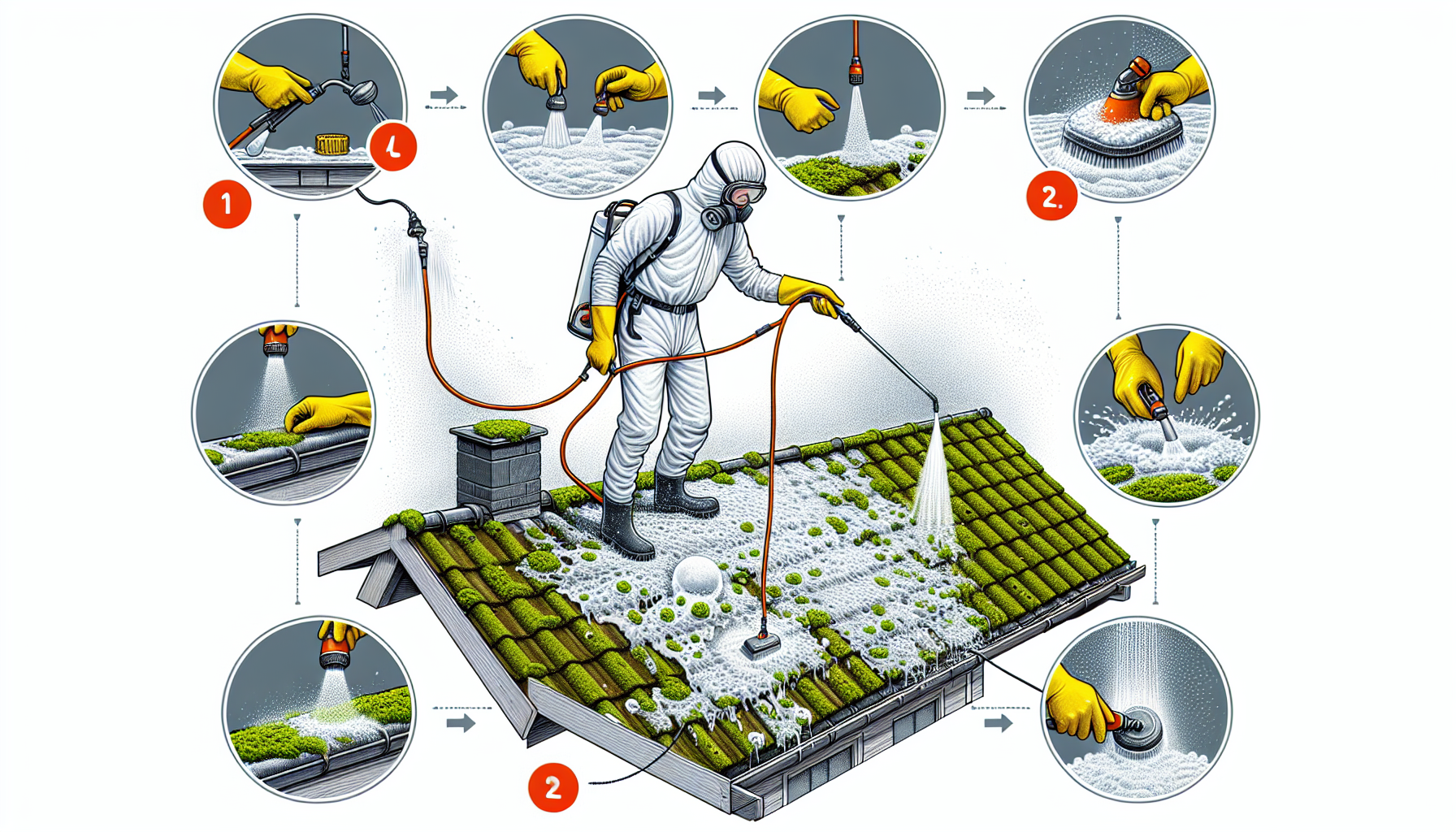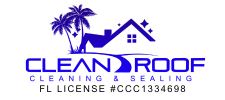Soft washing is a cleaning method that utilizes special solutions applied with low-pressure water, making it suitable for delicate surfaces such as roofs and siding where high pressure can be damaging. This discussion will delve into the workings of soft washing, its advantages, and appropriate situations for its use.
Key Takeaways
-
Soft washing is a gentle cleaning technique using low-pressure water combined with algaecides, bleach, surfactants, and water to remove dirt, mildew, and organic stains without damaging surfaces.
-
Key differences between soft washing and pressure washing include the lower pressure and use of biodegradable cleaning solutions in soft washing, making it suitable for more delicate surfaces like wood, vinyl, and roof shingles.
-
Soft washing is environmentally friendly and extends the lifespan of roofs and siding by preventing premature aging and harmful growths, though it can be more time-consuming and may require repeated applications for maintenance.
Understanding Soft Washing
Soft washing is a method of cleaning that employs both low-pressure water and specialized cleaning solutions to effectively clean surfaces. This approach stands in contrast to traditional pressure washing, which often uses high pressure that may damage or strip paint from delicate or fragile surfaces below. The specific chemical composition utilized for soft washing comprises the following components:
-
Water
-
Bleach
-
Surfactants
-
Algaecides
These elements work seamlessly to eliminate dirt, mildew, and other contaminants and organic blemishes without inflicting any harm on the surface being cleaned.
For exterior areas affected by biological contaminants such as algae growth and mildew, this technique proves highly efficient. Soft washing eradicates plant-based growths along with fungal and bacterial deposits from these spaces safely. Thus preserving both the beauty and structural integrity of your residence. It’s an all-encompassing procedure that doesn’t just clean—it also sterilizes surroundings, which can extend how long they remain pristine.
Key Differences Between Soft Washing and Pressure Washing

Soft washing and pressure washing both aim to purge dirt from exterior surfaces, yet they differ significantly in their approach and results. The primary distinction lies in the difference in the level of water pressure utilized and the specific cleaning agents used. Soft washing employs a gentler stream alongside environmentally friendly chemical solutions, whereas traditional pressure wash techniques rely on blasting away grime with forceful jets of high-pressure water.
When it comes to removing stubborn dirt, high PSI equipment is deployed during a standard pressuring wash suitable for robust surfaces. This same intensity can be detrimental to more sensitive areas. Alternatively, soft washing makes use of specialized gear that softly applies a chemical blend that effectively breaks down unwanted substances without inflicting harm upon the surface itself. Deciding whether to employ soft or hard pressuring methods should hinge on the composition of the materials at hand and how well they can withstand direct pressure.
Soft Washing Technique
The soft washing method is a cleaning technique that applies water at pressures lower than 500 PSI in combination with environmentally friendly cleaning solutions to eliminate dirt, mold, and grime from various surfaces. As a low-pressure washing approach, it’s particularly suitable for fragile materials like wood and vinyl siding because it offers thorough cleaning without harming them. This stands in stark contrast to other power washing or pressure washing methods which rely on high-pressure water streams that could potentially damage these types of sensitive surfaces.
Soft washing utilizes specialized nozzles designed to expand the spray area thereby reducing the force exerted upon contact with the surface being cleaned—offering a gentler option compared to high-powered alternatives both pressure washing. The detergents used in this process effectively break down organic stains while safeguarding any protective finishes against degradation caused by more aggressive high-pressure techniques.
Ideal Surfaces for Soft Washing

Soft washing is an appropriate cleaning technique for surfaces that might be harmed by high-pressure methods. This approach is highly effective on roof shingles, where it removes algae without harming the roofing materials. To prevent damage to the shingles while achieving a comprehensive clean, soft washing stands out, unlike pressure washing as the preferred method for roof maintenance.
The following are prime candidates for soft-washing treatment:
-
Residential sidings crafted from vinyl, stucco, or wood.
-
Window and siding installations that could be compromised under high pressure find safety in this gentle wash technique.
-
Aged wooden fences and decks especially gain advantage from soft washing. It conditions these surfaces suitably before staining or painting applications without inflicting harm.
For surface materials bonded with mortar or sand like cedar shake and wood panel siding which are particularly susceptible to damages inflicted by intense pressure, employing the softer route of cleaning ensures their aesthetic appeal and extends their functional life span significantly.
Benefits of Soft Washing Your Home
Soft washing provides various advantages that are appealing to property owners. It stands out for being environmentally conscious, using solutions in the washing process that break down harmlessly and pose no threat to your home or the planet. This method is a more eco-friendly option than standard pressure washing techniques. It conserves water by utilizing less of it throughout the cleaning process.
Soft washing has numerous benefits including:
-
Prolonging the durability of roofing materials and siding by shielding them from damaging high temperatures and organic infestations
-
Blocking destructive organisms like mold and algae from taking hold, which keeps your residence both safe and aesthetically pleasing
-
Contributing to energy savings by preventing dark roof stains that can absorb additional sunlight
In essence, soft washing not only delivers enduring results but also significantly boosts a house’s aesthetic charm and curb appeal while potentially increasing its market value.
How to Perform Soft Washing

Carrying out soft washing involves essential steps to ensure a thorough and safe cleaning operation. The main procedures encompass setting up the cleaning zone, administering the chemical mixture, and thoroughly washing off the surfaces. Protective equipment such as safety goggles, gloves, and non-slip footwear is vital to protect against exposure to chemicals and potential hazards.
During a standard softwash routine, one should moisten surrounding plants before using a chemical solution, let it sit for some time to work effectively on dirt or stains, followed by an extensive rinse with water.
Preparing the Area
It is essential to prepare adequately to protect the surrounding environment and belongings. Follow these measures:
-
Shield your plants, outdoor décor, and furniture by covering them with appropriate materials to guard against contact with the cleaning agents.
-
Relocate any movable vegetation and patio furnishings a safe distance from your dwelling to minimize their exposure to potentially harmful chemicals.
-
If you have a fishpond close by, ensure it’s covered so that the inhabitants are kept safe from any splash or residue of the cleansing solutions.
Confirm that all windows and doors are securely shut in order not to allow water ingress during soft washing activities. Items such as footwear and doormats should be removed for protection against unwanted moisture or bleaching effects. It may also be wise to apply bleach neutralizers like ‘Plant Protect’ on ornamental non-edible plants before starting wash procedures involving bleach-based products—and once again after completion—to safeguard them from damage caused by harsh substances present in cleaning formulations.
Applying the Chemical Mixture
Ensure that you adhere to the manufacturer’s guidelines for concocting the cleaning mixture, maintaining an appropriate proportion for optimal removal of grime and living organisms. A typical blend consists of equal parts household bleach and water, with an addition of 100ml liquid soap per liter in the mix. Once mixed, transfer this solution into a farm-style sprayer or employ chemical injectors designed to infuse and distribute the cleaning agents via your soft wash system.
When applying the prepared solution, do so methodically in segments at a gentle pressure setting to achieve even coverage without drenching surfaces excessively. Begin application from lower sections working upward to circumvent unsightly streaks on areas yet untouched by moisture. Employing this approach permits the chemicals within your wash formula to effectively disintegrate accumulations of dirt as well as biological growth such as algae and mold.
Rinsing and Final Steps
Start by thoroughly washing off the cleaning agent, starting from the uppermost point and moving downwards with either a garden hose or a pressure washer set on low. This strategy guarantees that all remnants of the solution as well as pollutants are completely removed without leaving behind any residue.
Afterward, examine the areas you’ve cleaned for spots that might require extra effort. If there are persisting stains or dirt, apply additional cleaner and proceed to rinse once again. Conclude with an inspection around the entire space to identify any overlooked regions. Reapply your cleansing treatment in these sections if necessary. By doing so, you ensure all surfaces have been meticulously cleansed and are devoid of remaining stains or dirt using this method.
Necessary Equipment for Soft Washing
For successful soft washing, specific essential equipment is required. A typical soft wash system includes a pump, flexible hoses for easy movement and lasting use, and a spray gun with adjustable settings. These pumps are designed to output low pressure between 100-500 PSI suitable for soft wash techniques that do not damage surfaces.
It’s also critical to have spray guns that can regulate the flow rate less pressure and pattern of the water or cleaning solution. The variety of nozzles available serves distinct purposes: broad spray nozzles enable quick coverage over expansive areas while fan nozzles are intended for effectively washing flat surfaces like siding or decks. Having adjustable nozzles lets you tailor both the spread and pressure in real-time according to the different requirements of each wash job.
Common Chemicals Used in Soft Washing
Soft washing relies on a careful selection of cleaning agents that are both effective and safe. The typical arsenal includes:
-
Algaecides target the eradication and future prevention of algae accumulation.
-
Surfactants play an essential role by lowering the surface tension to enhance the penetration ability of cleaning solutions, thereby facilitating more efficient dirt and grime removal.
-
Water serves as a diluting medium for these chemicals, resulting in an appropriate concentration for the soft washing mix.
These compounds are delivered via low-pressure application methods to strike a balance between thorough cleansing without causing harm or damage to any surface being treated.
In this process, surfactants ensure better dispersal over services due to their function in reducing water’s surface tension. They promote superior access so that embedded grime can be loosened effectively. By using salt-based cleaners as part of this method, ensures substances like dirt yield under less invasive measures than high pressure allows—thus preserving the integrity of sturdy materials while still achieving cleanliness through stain breakdowns with controlled force applications.
Pros and Cons of Soft Washing
Soft washing is beneficial in several ways but also has some limitations. It reduces the chance of harming delicate surfaces, which makes it perfect for cleaning roofs, vinyl siding, and wood paneling. The use of a chemical mixture in soft washing efficiently eradicates organic stains including mildew and algae, providing an extensive clean without resorting to high pressure.
On the other hand, soft washing can take more time compared to low-pressure washing techniques since the chemicals need enough time to react with the stains effectively. Maintaining cleanliness might require multiple applications over a period when using soft wash techniques, unlike pressure washing methods that often produce quicker results.
Pros of Soft Washing
One of the key advantages of soft washing is its ability to protect delicate surfaces, offering a level of safety that minimizes the risk of damage or physical harm. This gentler method makes it an ideal choice for cleaning historic buildings outdoor furniture and structures without harming their sensitive materials.
Soft washing brings numerous benefits including:
-
An environmentally conscious approach by diminishing reliance on harsh cleaning practices and lessening environmental impact.
-
Simplified operation for novices due to reduced need for extensive protective measures and experience when compared with high-pressure methods.
-
Increased control over the process significantly reduces potential injuries often associated with high-pressure equipment.
Unlike traditional pressure washers, soft washing relies on low-pressure techniques which are far better suited to clean exterior surfaces and for handling various surface types without risking damage. While still effectively cleansing exteriors, this more considerate form of exterior maintenance avoids using excessive force common in standard pressure washing applications.
Cons of Soft Washing
Despite the advantages of soft washing, there are several downsides. This method often requires more time to clean surfaces than pressure washing because it relies on cleaning chemicals. For example, a two-story house typically needs approximately two to three hours for a thorough soft wash.
Some stubborn oil stains that are deeply ingrained may resist the gentle approach of a soft wash and necessitate removal through high-pressure techniques instead. To completely purify certain areas where organic material accumulates regularly, multiple applications might be necessary when using this gentler pressure and chemical-based form of washing.
DIY Soft Washing vs. Hiring Professionals
Choosing between DIY soft washing and hiring professional washers involves weighing the pros and cons of both options. Undertaking a DIY project can lead to cost savings since acquiring or renting equipment could be less expensive initially than enlisting experts. It allows you to carry out the task at your own pace.
On the other hand, opting for professional services like that of Clean Roof guarantees that proper methods will be utilized while minimizing potential hazards. Experts possess both the proficiency and advanced washing equipment needed to execute the work effectively with safety in mind. When deliberating whether to do it yourself or engage professionals, carefully evaluate all risks and gain a comprehensive understanding of each approach’s techniques involved.
Summary
In summary, soft washing is a gentle yet effective cleaning method that offers numerous benefits for homeowners. It uses low-pressure water and biodegradable cleaning solutions to clean and sanitize surfaces without causing damage. Soft washing is ideal for delicate surfaces such as roof shingles, windows, and siding, and it offers several environmental and aesthetic benefits.
Whether you choose to perform soft washing yourself or hire a professional, understanding the process and the necessary equipment will be a key difference in ensuring your home remains clean and well-maintained. Embrace the power of soft washing and transform your home’s exterior with confidence.

